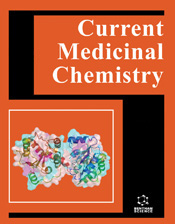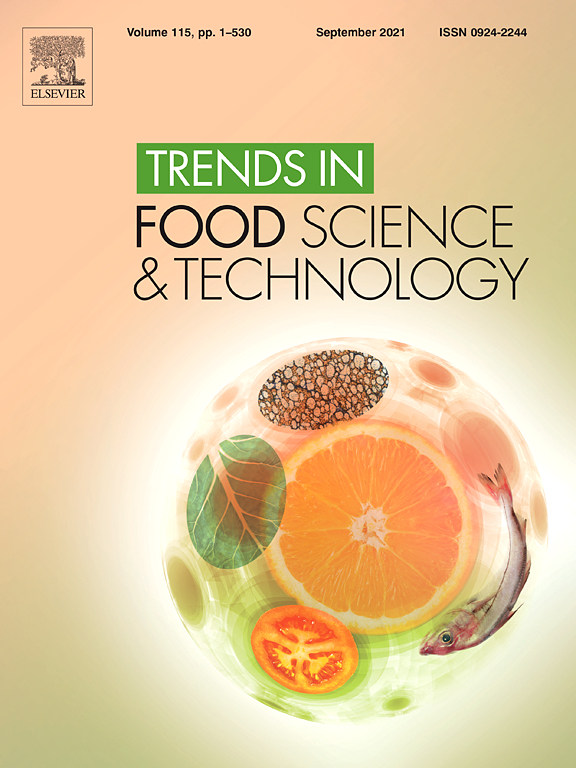Allergy
How to submit an article:
- Registered users can submit any published journal article that has a unique DOI (Digital Object Identifier) name or link to Research Hub.
- For example, you can paste the full DOI link:
https://doi.org/10.1109/5.771073or just the DOI name:10.1109/5.771073into the field above and click submit. - The person who is first to submit a valid article to Research Hub will forever be credited for it, and every article submission earns you +6 Research Points.
Published research studies are articles that present the findings of original research that has undergone a peer-review process and has been made publicly available in scholarly journals, books or other media.

Chemistry and Bioactivity of Flos Magnoliae, A Chinese Herb for Rhinitis and Sinusitis
2022 Jul 01 Current Medicinal Chemistry Shen Y, Li C, Zhou S, Pang E, Story D, Xue C
A wide range of pharmacological actions of Flos Magnoliae (FM, Chinese name: Xin-yi) have been reported, including anti-allergy, anti-inflammation and anti-microbial activity.
Review Article Xin Yi Rhinitis
Network pharmacology-based analysis of the mechanism of Saposhnikovia divaricata for the treatment of type I allergy
2022 Jun 27 Pharmaceutical Biology Li X, Li H, Wang T, Zhao Y, Shao Y, Sun Y, et al.
Saposhnikovia divaricata could inhibit mast cells, providing a scientific basis for further research and clinical applications of SD in TIA treatment.
Network Pharmacology
Potential Role of Omega-3 Polyunsaturated Fatty Acids in Pediatric Food Allergy
2021 Dec 29 Nutrients Sartorio MUA, Pendezza E, Coppola S, Paparo L, D’Auria E, Zuccotti GV, et al.
Recent evidence suggests an imbalance in the ω-3:ω-6 ratio due to increased intake of ω-6, especially in westernized diets. The critical age groups, such as infants, toddlers, young children, pregnant/lactating women, and fish-allergic patients, may have inadequate ω-3 intake. Preclinical studies with PUFAs supplementation show promising effects in suppressing allergic responses, but clinical study results are conflicting regarding timing, dosages, and the most likely beneficiaries. The review emphasizes the need for more data on the effects of ω-3 PUFAs supplementation in both the general and food-allergic populations.
Review Article Children's Health Food Allergy
Traditional Chinese medicine for food allergy and eczema
2021 Jun Annals of Allergy, Asthma & Immunology Wang Z, Wang ZZ, Geliebter J, Tiwari R, Li XM
TCM has potential as safe and effective therapy for food allergy and eczema. Further research is needed for botanical drug development and to further define the mechanisms of actions.
Review Article
Vitamin D and Allergy Susceptibility during Gestation and Early Life
2021 Mar 21 Nutrients Briceno Noriega D, Savelkoul HFJ
Our review indicates that a sufficient vitamin D status during gestation and early life can lower the susceptibility to develop an allergy in infants although there remains a need for more causal evidence.
Review Article PregnancyResearch insights are moderated by the Research Hub team and offer an at-a-glance overview of interesting research findings.

2020 The Journal of Allergy and Clinical Immunology: In Practice
Consumption of raw milk early in life appears to provide protection against asthma and allergies, regardless of whether children live on farms or in rural, non-farm areas.
Meta-Analysis Asthma Raw Milk
The Beneficial Effect of Farm Milk Consumption on Asthma, Allergies, and Infections: From Meta-Analysis of Evidence to Clinical Trial
Brick T, Hettinga K, Kirchner B, Pfaffl MW, Ege MJ

2017 Trends in Food Science & Technology
The claimed health benefits of coix include anti-oxidation, anti-cancer, anti-inflammation, anti-allergy, enhancing immunological activity, regulating endocrine functions, anti-obesity, anti-diabetes, gastroprotection, hypolipidemia, and modulating gut microbiota.
Review Article
Coix: Chemical composition and health effects
Fan Zhu
Review Articles
Review articles summarise and critically evaluate the current state of research on a specific topic or field by synthesising multiple primary research studies.

Chemistry and Bioactivity of Flos Magnoliae, A Chinese Herb for Rhinitis and Sinusitis
2022 Jul 01 Current Medicinal Chemistry Shen Y, Li C, Zhou S, Pang E, Story D, Xue C
A wide range of pharmacological actions of Flos Magnoliae (FM, Chinese name: Xin-yi) have been reported, including anti-allergy, anti-inflammation and anti-microbial activity.
Review Article Xin Yi Rhinitis
Potential Role of Omega-3 Polyunsaturated Fatty Acids in Pediatric Food Allergy
2021 Dec 29 Nutrients Sartorio MUA, Pendezza E, Coppola S, Paparo L, D’Auria E, Zuccotti GV, et al.
Recent evidence suggests an imbalance in the ω-3:ω-6 ratio due to increased intake of ω-6, especially in westernized diets. The critical age groups, such as infants, toddlers, young children, pregnant/lactating women, and fish-allergic patients, may have inadequate ω-3 intake. Preclinical studies with PUFAs supplementation show promising effects in suppressing allergic responses, but clinical study results are conflicting regarding timing, dosages, and the most likely beneficiaries. The review emphasizes the need for more data on the effects of ω-3 PUFAs supplementation in both the general and food-allergic populations.
Review Article Children's Health Food Allergy
Traditional Chinese medicine for food allergy and eczema
2021 Jun Annals of Allergy, Asthma & Immunology Wang Z, Wang ZZ, Geliebter J, Tiwari R, Li XM
TCM has potential as safe and effective therapy for food allergy and eczema. Further research is needed for botanical drug development and to further define the mechanisms of actions.
Review Article
Vitamin D and Allergy Susceptibility during Gestation and Early Life
2021 Mar 21 Nutrients Briceno Noriega D, Savelkoul HFJ
Our review indicates that a sufficient vitamin D status during gestation and early life can lower the susceptibility to develop an allergy in infants although there remains a need for more causal evidence.
Review Article Pregnancy
Coix: Chemical composition and health effects
2017 Mar Trends in Food Science & Technology Fan Zhu
Review ArticleThe claimed health benefits of coix include anti-oxidation, anti-cancer, anti-inflammation, anti-allergy, enhancing immunological activity, regulating endocrine functions, anti-obesity, anti-diabetes, gastroprotection, hypolipidemia, and modulating gut microbiota.
Clinical Trials
Clinical trials are research studies that involve people and are conducted to evaluate the safety and efficacy of new treatments or interventions, such as drugs, medical devices, or behavioural therapies.
Study Protocols
Published study protocols are detailed plans that outline the objectives, methodology, statistical analyses, and organisation of a research study that have been made publicly available for others to review and use as a reference.
Presentation Slides

Meta-Analysis
Consumption of raw milk early in life appears to provide protection against asthma and allergies, regardless of whether children live on farms or in rural, non-farm areas.
Brick T, Hettinga K, Kirchner B, Pfaffl MW, Ege MJ

Review Article
The claimed health benefits of coix include anti-oxidation, anti-cancer, anti-inflammation, anti-allergy, enhancing immunological activity, regulating endocrine functions, anti-obesity, anti-diabetes, gastroprotection, hypolipidemia, and modulating gut microbiota.
Fan Zhu
Executive Summary
Write an executive summary in the form of a blog article on the topic of "Research into Chinese medicine treatment for Allergy" summarising the research below and using language that can be easily understood by patients and avoiding medical jargon using a professional and caring tone of voice.
Write an executive summary in the form of a blog article on the topic of "Researched Chinese medicine treatments for Allergy" summarising the research below in an objective and easy to understand way, and using language that can be easily understood by patients. Group the article into Chinese medicine treatments first, followed by nutrition and other treatments. Avoid using medical jargon and use a professional and caring tone of voice.
Write me a concise but easy to understand executive summary on the topic of "Chinese medicine treatments for Allergy" based on the following research that I will give you. Your summary should be 2 paragraphs long in Australian English spelling and include references to the studies.
A Meta-Analysis published in 2020 in the journal The Journal of Allergy and Clinical Immunology: In Practice found that Consumption of raw milk early in life appears to provide protection against asthma and allergies, regardless of whether children live on farms or in rural, non-farm areas. Whoever did the research carried out a comprehensive literature review, identifying twelve relevant publications from eight unique studies. Their approach involved a meta-analysis to substantiate the protective effect of raw milk consumption in early life, particularly for ages ranging from less than one year old to five years old. They further analyzed the impacts of raw milk on not only asthma but also other ailments such as wheezing, hay fever, allergic rhinitis, and atopic sensitization. Moreover, evidence was provided about the beneficial effects of raw milk for children, both living on the farms and those in rural sectors but not on farms. Moreover, in the interpretation of results, it was clearly evident that the consumption of raw milk had an independent effect, separate from other farm exposures. In essence, even children not residing on farms theoretically can still gain from the benefits of raw milk consumption. However, they express a strong sense of caution, advocating against the consumption of raw milk due to the possibility of life-threatening infections. Furthermore, the distinction between raw farm milk and industrially processed milk was underlined to highlight differences in cellular components, fat fraction, and heating degrees. Preliminary findings link these characteristics and attributes of raw milk to heat-labile molecules and components found in its fat fraction.
A Review Article published in 2017 in the journal Trends in Food Science & Technology found that The claimed health benefits of coix include anti-oxidation, anti-cancer, anti-inflammation, anti-allergy, enhancing immunological activity, regulating endocrine functions, anti-obesity, anti-diabetes, gastroprotection, hypolipidemia, and modulating gut microbiota. Coix seeds contain a range of bioactive components including polysaccharides, proteins, lipids, polyphenols, phytosterols, carotenoids, spiroenone and lactams. The chemical constituents of coix contribute to a range of medical and nutritional benefits. These claimed health benefits include anti-oxidation, anti-cancer, anti-inflammation, anti-allergy, enhancing immunological activity, regulating endocrine functions, anti-obesity, anti-diabetes, gastroprotection, hypolipidemia, and modulating gut microbiota. The bioactivity of coix depends on the varieties as well as the sample preparation methods such as the solvent type. Coix seed is rich in starch and has similar processing properties of other cereals for food formulation. Coix can be further developed as a healthy grain for human consumption.
Moderation Tools
Topic
Sign In
Users not signed in are limited to viewing the 5 most recent items of content.